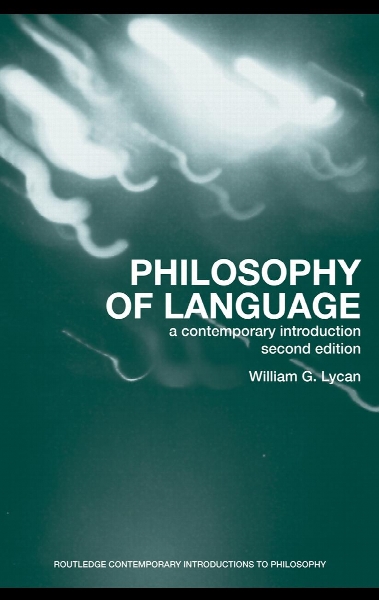Philosophy of language : a contemporary introduction,2nd ed
- نوع فایل : کتاب
- زبان : انگلیسی
- مؤلف : William G Lycan
- ناشر : New York : Routledge,
- چاپ و سال / کشور: 2008
- شابک / ISBN : 9780203930007
Description
Preface ix Acknowledgements xi Acknowledgements for the Second Edition xii 1 Introduction: meaning and reference 1 Overview 1 Meaning and understanding 1 The Referential Theory 3 Summary 6 Questions 6 Further reading 6 Part I: Reference and referring 2 Definite descriptions 9 Overview 9 Singular terms 10 Russell’s Theory of Descriptions 12 Objections to Russell’s theory 19 Summary 29 Questions 30 Further reading 30 3 Proper names: the Description Theory 31 Overview 31 Frege and the puzzles 31 Opening objections 36 Searle’s Cluster Theory 38 Kripke’s critique 39 Summary 43 Questions 43 Further reading 444 Proper names: Direct Reference and the Causal–Historical Theory 45 Overview 45 Possible worlds 46 Rigidity and proper names 47 Direct Reference 49 The Causal–Historical Theory 53 Problems for the Causal–Historical Theory 55 Natural-kind terms and “Twin Earth” 58 Summary 60 Questions 61 Further reading 61 Part II: Theories of meaning 63 5 Traditional theories of meaning 65 Overview 65 The Proposition Theory 68 Summary 74 Questions 74 Further reading 74 6 “Use” theories 76 Overview 76 “Use” in a roughly Wittgensteinian sense 77 Objections and some replies 79 Inferentialism 83 Summary 84 Questions 85 Further reading 85 7 Psychological theories: Grice’s program 86 Overview 86 Grice’s basic idea 86 Speaker-meaning 88 Sentence meaning 92 Summary 96 Questions 96 Further reading 97 8 Verificationism 98 Overview 98 The theory and its motivation 98 Some objections 100The big one 105 Summary 108 Questions 108 Further reading 108 9 Truth-Condition Theories: Davidson’s program 109 Overview 109 Truth conditions 109 Truth-defining natural languages 114 Objections to the Davidsonian version 117 Summary 123 Questions 124 Further reading 125 10 Truth-Condition Theories: possible worlds and intensional semantics 126 Overview 126 Truth conditions reconceived 126 Advantages over Davidson’s view 129 Remaining objections 131 Summary 133 Questions 133 Further reading 133 Part III: Pragmatics and speech acts 135 11 Semantic pragmatics 137 Overview 137 Semantic pragmatics vs. pragmatic pragmatics 138 The problem of deixis 139 The work of semantic pragmatics 141 Summary 143 Questions 143 Further reading 143 12 Speech acts and illocutionary force 144 Overview 144 Performatives 144 Infelicities and constitutive rules 149 Cohen’s problem 151 Illocutionary theories of meaning 153 Summary 154 Questions 154 Further reading 15513 Implicative relations 156 Overview 156 Conveyed meanings and invited inferences 157 Conversational implicature 158 Presupposition and conventional implicature 163 Relevance Theory 166 Indirect force 168 Summary 170 Questions 171 Further reading 171 Part IV: The dark side 173 14 Metaphor 175 Overview 175 A philosophical bias 175 The issues, and two simple theories 176 Davidson’s causal theory 177 The Naive Simile Theory 179 The Figurative Simile Theory 180 The Pragmatic Theory 183 Metaphor as analogical 187 Summary 189 Questions 190 Further reading 190 Notes 191 Glossary 201 Bibliography 205 Index 217


